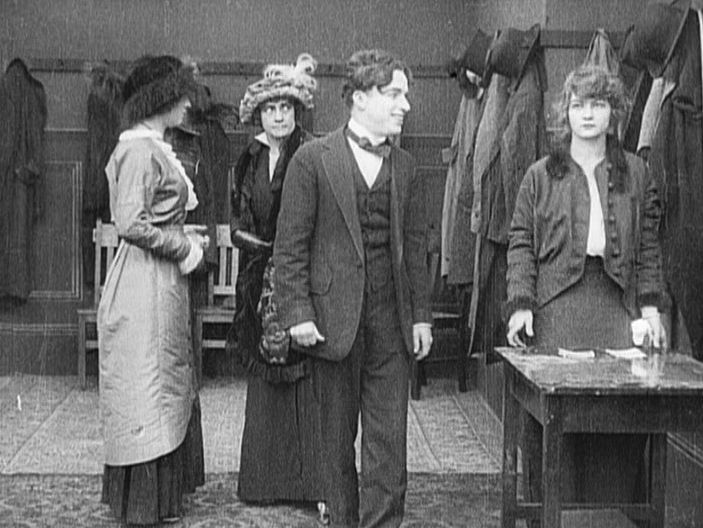Adolphe Menjou remembered that Chaplin's mood could be measured by the color of his suit:
The regular studio staff members claimed that they could gauge his mood by the suit he was wearing. They would call his house before he arrived and would try to learn from his valet what clothes he was wearing that day. If he were wearing his famous green suit, we would get ready for a bad day. The green suit was his melancholy suit. But if he were wearing a blue suit with pin stripes, that would be a sign of a good day; he would be in a jovial all's-right-with-the-world mood, and we would get some fine scenes shot. A gray suit meant a sort of in-between mood; we would never be sure whether things would go right on a gray-suit day, so we would feel our way for a while until a definite mood developed. One or two of the staff had this suit-to-match-the-mood theory developed to a very fine degree. They claimed that they knew his whole wardrobe and that every suit in it had a different shade of meaning. (Adolphe Menjou, It Took Nine Tailors, 1948)
The suit-color theory was corroborated by Chaplin's publicist, Jim Tully (who was alerted to it by Eddie Sutherland*):
It was Eddie Sutherland, this assistant director, who claimed that he could tell Chaplin's moods by the suit he happened to be wearing. A dark-green suit was always evidence of a heavy mood. Sutherland first drew my attention to this in Chaplin. I watched it over a period of two months. It never failed.
One of the most vigorous pictures of the comedian in my memory is that of him walking, head down, face buried in a meditative scowl, and wearing the dark-green suit.
When in a light mood Chaplin always walked swiftly, his arms bent, his hands even with his breast, his fingers snapping continually. I always knew that he could be easily approached at such a time. He seldom, if ever, wore light clothes. The nearest approach to it was the wearing if a pair of flannel trousers. (Jim Tully, "The Real Life Story Of Charlie Chaplin," Pictorial Review, April 1927)
*In an interview in 1959, Sutherland said that when Chaplin wore the green suit "all hell broke loose." (Jeffrey Vance,
Chaplin: Genius Of The Cinema, 2003)




































